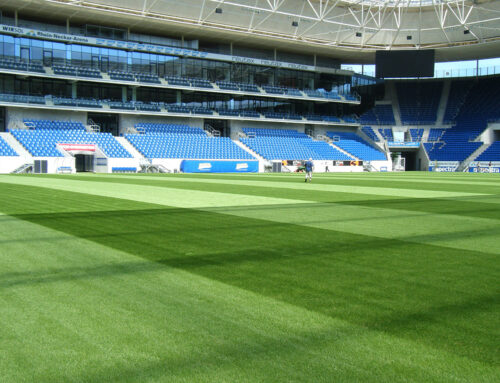Turf is tricky
Healthy turf isn’t an overnight task and for those involved in its maintenance, you will know that it’s a labour of love. Turf that meets the demands of players requires year-round care and attention that considers seasonal changes, player footfall and disease burden. And given that the average 18-hole golf course is around 150 acres, you would be forgiven for feeling like you are up against it at times.
Maintaining turf requires a balance – you need to be able to produce fantastic greens that play great for your club members all year round nowadays, while disrupting the course as little as possible; not forgetting to keep it cost effective for your club.
Long term maintenance plans are key to things running smoothly. They keep your costs reasonable and playing surfaces at their best, which means a happy club and happy club members. Throughout the year there are some additional approaches that can lend a hand in encouraging strong and healthy turf.
Identify troublesome areas
Some areas will generally be more susceptible to damage and poor health. For example, high traffic areas, shade locations, poorly irrigated areas, turfgrass can easily suffer from turf thinning and poor health. Identifying the areas more likely to decline, allows for preventative measures that can be incorporated into long term maintenance plans and swift action when it is needed.
Constant mowing can also take its toll and it’s wise to pay attention to ball damage and divots that have been created when taking shots. Some of your trickier holes may start to suffer from one too many bogeys! These areas need prompt repair to avoid further damage. It’s also good practice to maintain a reputable, cared for course.

Emphasise players role
Most golfers are on the course to improve their game, but it’s in their best interests to play on healthy greens, so providing some useful information on ways they can help support the course can’t be a bad thing. Reminders to keep buggies on the path, to replace turf they may have disrupted, to avoid congregating on specific areas, and the environmental impact certain play can have, all helps keep everyone on the same page. Keeping in close communication with your golf club members about simple ways they can adapt their practice and support the maintenance of their course, can make a big impact.
Take the rough with the smooth
Don’t forget about those hazard areas – rough, water, and bunkers. They all form part of the overall natural landscape of the course and as such, require individual attention. Ponds and lakes need efficient regimes in place to avoid overgrowth of algae and unpleasant conditions. Taking the time to establish a good aeration and dredging system is integral for sparkling, healthy waters – And your players will thank you when they are searching for misplaced golf balls. This work takes time and often goes forgotten because other works on key playing surfaces take priority.
Bunkers also require a significant amount of housekeeping, including frequent raking, regular refilling with sand, and landscaping of the surrounding turf. Overall, maintenance of hazard areas requires a delicate balance that makes the most of their natural features without allowing them to become unkempt areas of the course. To find this balance the Course Manager needs to have a fully functioning effective maintenance team, which is wholeheartedly supported by the Club.
If you would like to know more about our independent agronomy services and how we can support you overcome these challenges, feel free to get in touch and we can arrange a 1:1 chat. Contact us.




